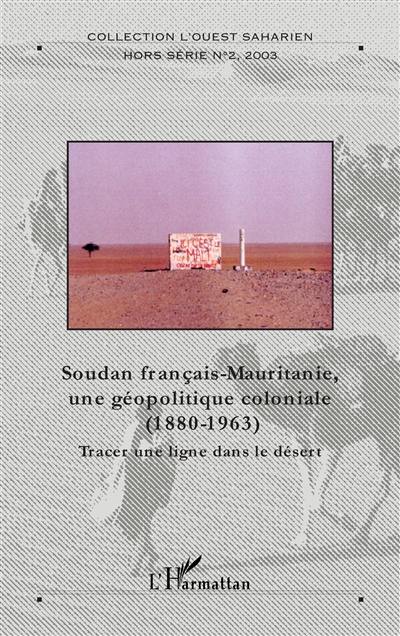
Fiche technique
Format : Broché
Nb de pages : 262 pages
Poids : 365 g
Dimensions : 14cm X 22cm
EAN : 9782747543866
Soudan français-Mauritanie, une géopolitique coloniale, 1880-1963
tracer une ligne dans le sable
Quatrième de couverture
Cet ouvrage retrace l'histoire d'une frontière en plein milieu saharien, l'histoire d'une ligne tracée dans le sable... Quels furent les enjeux qui se sont noués autour de cette frontière qui sépare actuellement les Républiques du Mali et de la Mauritanie?
Travaillant sur de nombreux fonds d'archives, étudiant les cartes anciennes, l'auteur a analysé les conceptions et les volontés administratives qui ont présidé au découpage, et tenté de comprendre comment les traces précoloniales anciennes ont pu resurgir dans l'action d'acteurs exogènes. L'objectif de la recherche présentée ici est en effet d'envisager les actions concrètes qui furent à l'origine de cette abstraction que semble constituer une frontière, d'appréhender ce qu'en attendait l'administration coloniale, de saisir comment l'ont vécu les sociétés autochtones. La frontière soudano-mauritanienne, était-elle finalement justifiable?
En ce sens, l'ouvrage de Christelle Jus constitue une nouvelle et utile contribution à l'important débat historiographique concernant les frontières africaines.
Sudano-Mauritanian Colonial Geopolitics (1880-1963)
This work uncovers the history of a border in the middle of the Sahara, the history of a line drawn in the sand. What came to be at stake in the matter of this frontier which today separates the Republics of Mali and Mauritania?
Having studied many record archives and ancient maps, the author has analysed the administrative concepts and goals that governed the carveup, and attempted to understand how ancient pre-colonial boundaries were able to resurface through the deeds of exogenous actors.
The objective of the research presented here is to look at the concrete acts which gave form to the apparent abstraction of the frontier; to learn what the colonial administration expected of it, and to grasp how the autochtonous societies lived with it.
Revised in 1944 and today ratified by the states of Mali and Mauritania, was the course of the Sudano-Mauritanian frontier in the end justifiable? In this sense, Christelle Jus'work constitutes a new and important contribution to the historiographical debate about African frontiers.






